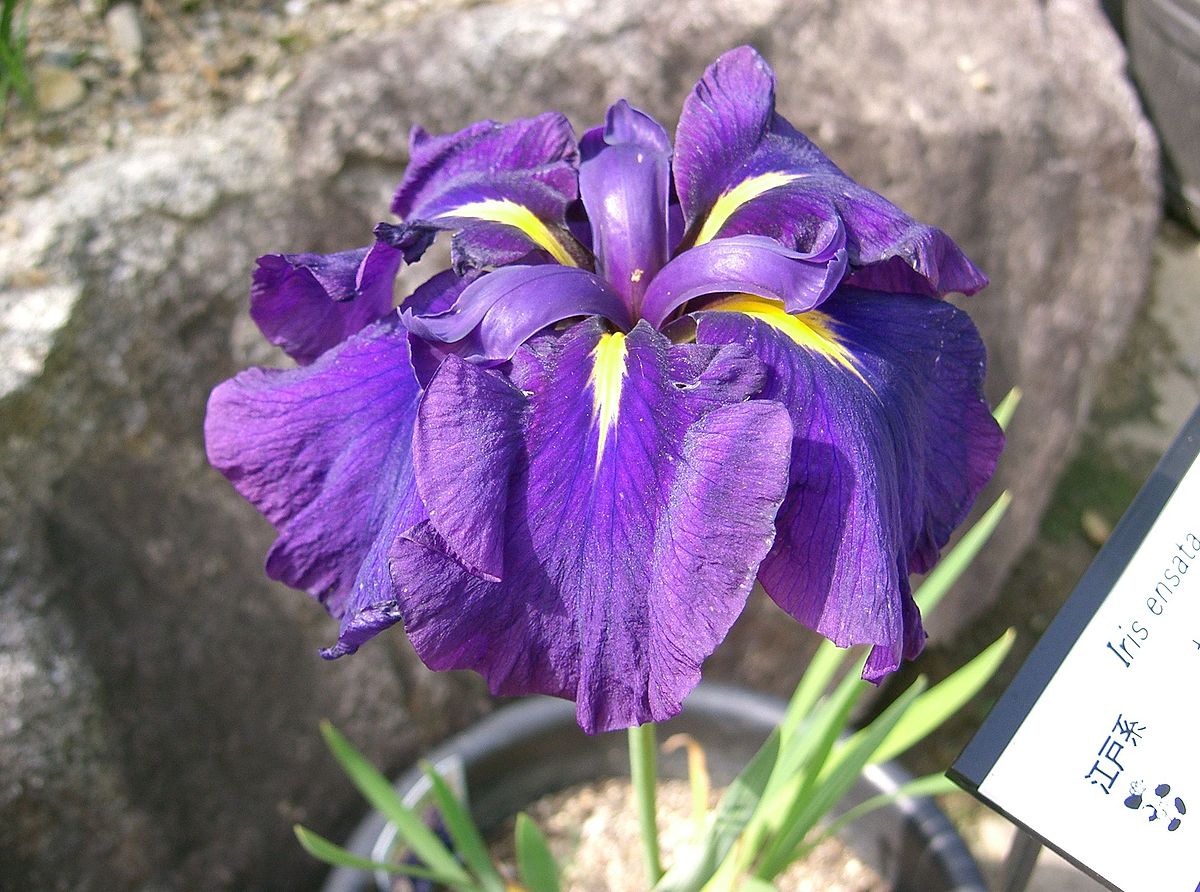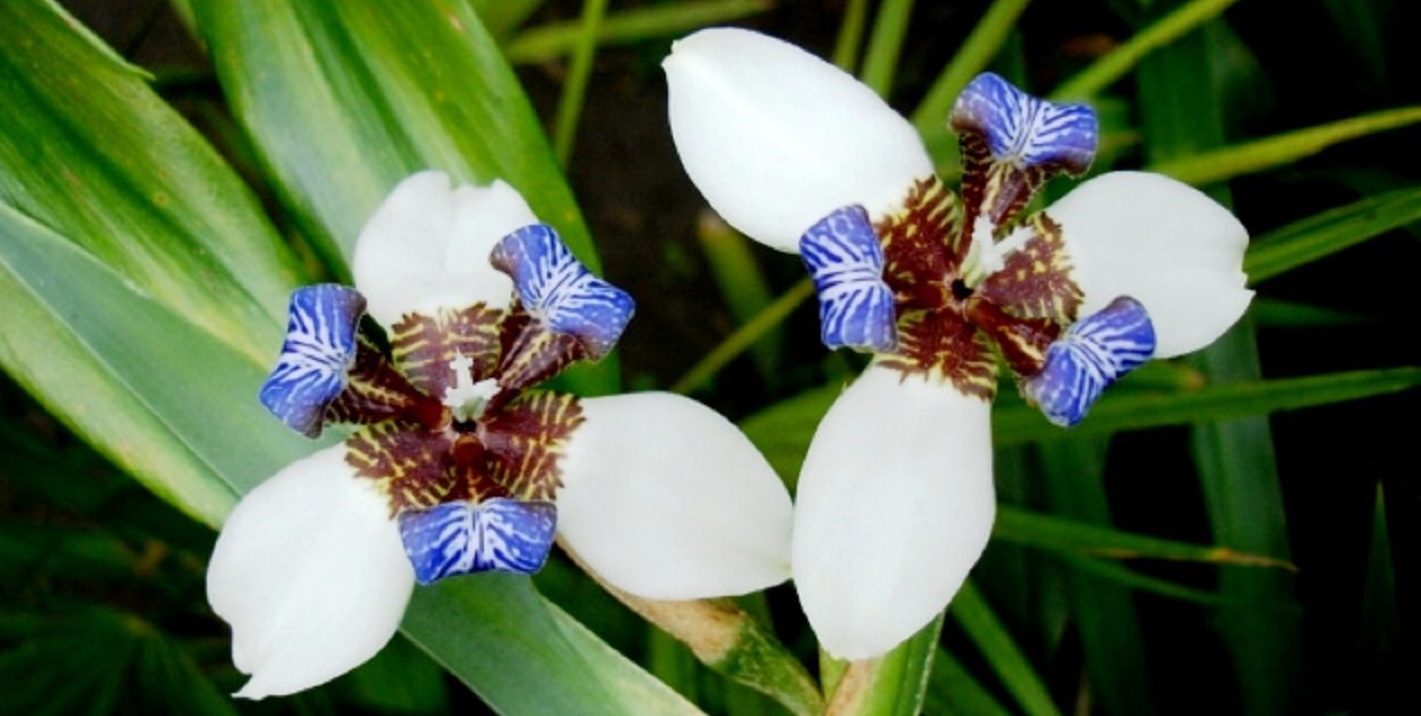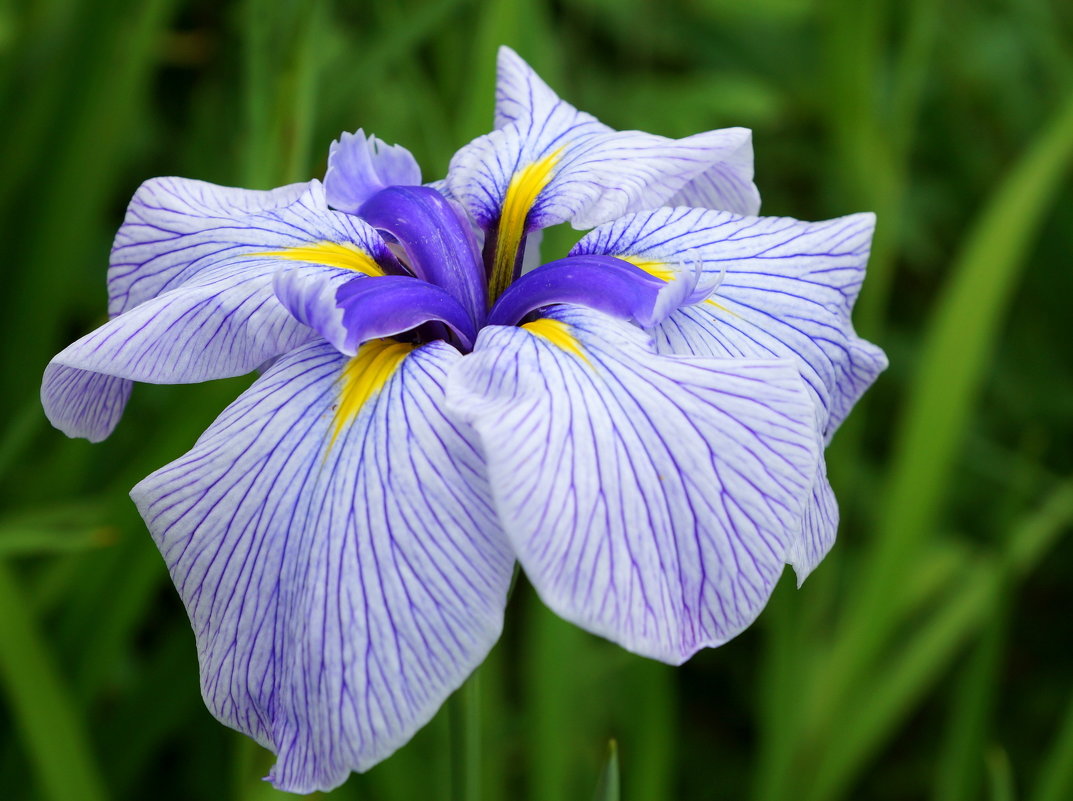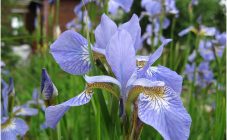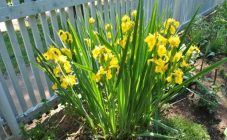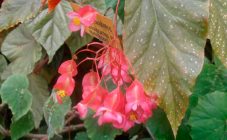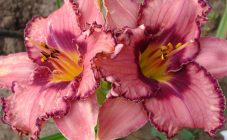Content:
Iris can decorate any garden and flower bed. To get spectacular plantings, you need to know how to grow and care for them.
Short description
Iris is a collection of rhizome perennials from the Iris family (Iris). There are more than 800 species of plants of decorative value.
Stems are either single or combined into bunches. The foliage is usually xiphoid, flattened, most often the leaves are arranged at the stem base. The bulk of the roots lies in the upper layers of the soil. Flowers are placed in inflorescences or singly.
Plants are common throughout the Northern Hemisphere, but the largest stands are found in Central and South-West Asia, the Mediterranean and Alaska. The culture has decorative and medicinal properties.
The main types of irises
The common iris culture includes both cultivated varieties of irises and wild (field) plants. The former are characterized by increased decorative properties, while wild irises are more common in nature. Among them there are many species and varieties that have their own certain differences. The main ones are listed below:
- Iris xiphoid. Planting and caring for a plant is relatively straightforward. Herbaceous perennial up to 80 cm in height. Forms a leafy erect stem, on the basis of which the remains of last year's foliage are located. The leaves have a xiphoid shape (as reflected in the name of the species), 1-2 mm wide, longer than the stem. The foliage is pointed, narrow-lanceolate. Each bush contains 1-4 dark purple velvety flowers. Flowering occurs in the second half of summer.
- Iris walking (neomarika, apostolic flower). Shrub iris, the length of the peduncles of which is approximately one and a half meters, and the length of the foliage varies from half a meter to 120 cm. Flowers up to 5 cm in diameter have a pleasant powerful smell, but they do not live long (about a day). Their color is usually milky, but bluish streaks are present.
- Japanese iris (sometimes called Chinese iris). The height of the foliage varies from 25-60 cm, and the color is from light greenish to emerald. The leaves are dense and durable, near the root are connected to rosettes. The flowers are large, up to 20 cm in diameter, on the shoot tops are combined into inflorescences of 4-5 pieces. Flowering lasts about three weeks, while the lifespan of an individual flower usually does not exceed 5 days. A notable variety of this species is terry iris (hana-shobu), created by breeders in Japan. Planting and caring for Japanese irises in the open field implies taking into account their origin.
- Iris hybrid (aka garden iris). Herbaceous tall iris (from 30 cm to 1 meter) with dense thick rhizomes. The inflorescences come in a variety of colors, from white and pink to bright blue. The diameter of the flowers is 8-15 cm. Flowering begins in the last decade of May and usually lasts until the end of June, in some cases, covering the beginning of July.
- Iris border (bearded iris, burgundy iris). They are characterized by large inflorescences (diameter 7.5-12.5 cm). Flowering is relatively late.
- Iris brown. Sometimes a distinguished category of irises, characterized by a bright brown color of the petals. One of the most decorative colors.
- Variegated iris (multicolored iris).The foliage is xiphoid, extended or linear. Their average length is 30-35 cm, width is up to 2 cm. Peduncle is about half a meter long, forms short branches in the upper part. Flowers 4-5 cm in diameter, odorless. It blooms in early summer.
In addition to species, flowers also differ from each other in color. The most common color types are pink iris and red iris, however there are other varieties. Some flower lovers can see iris brown, lilac, burgundy, white, etc.
Agrotechnics
Site preparation
Iris shows its decorative properties only in a sufficiently illuminated area. The soil should be loose and rich in nutrients. When planting in spring, it is necessary to first add potassium-phosphorus preparations and compost to the ground, while the use of manure should be abandoned. It is necessary to select a site with a sufficient area, since the plants require a space of at least half a meter from each other for the normal growth of roots.
For rhizome irises, soil with a neutral environment is selected. With increased acidity, mix the soil with lime, ash or chalk. For such irises, a landing hole is dug, in the center of which a low mound is poured. The central rhizome is placed on it, and the rest of the roots are distributed along its sides.
The main root is sprinkled with earth, and a layer of sand is poured on top of it. The soil is slightly compacted. It is not recommended to deepen the roots very much, they should be closer to the soil surface.
Bulbous irises are usually planted either in early spring or in the autumn before the onset of frost (at temperatures not lower than + 10 ° C). A shallow trench is dug on the plot. The soil extracted from the plot is abundantly mixed with garden soil, ground coal and river sand to organize drainage and improve nutrition, as well as with double superphosphate to enhance growth.
The trenches are sprayed with a solution of potassium permanganate for disinfection and a root formation stimulator. The bulbs are buried about 3-4 cm with sprouts upwards, leaving a distance of 20 cm between them. A soil mixture is poured over them, which is firmly tamped and watered. The next irrigation is carried out after 3-4 days.
Planting seeds
Seed material is most often sown in containers filled with a sandy substrate in the autumn. From above, the pots are covered with transparent glass or plastic wrap. By the beginning of spring, the seeds germinate, and after picking, they are transplanted into open ground. Planting is carried out in early spring.
When planting in spring, another method of storing seeds is also practiced. They are wrapped in a damp cloth and placed in a container in the freezer for a month. After this time, the container is moved to a warm, but not too hot place. Soon after that, the seeds will hatch, and they are planted in light soil, by all means lighting them up (for example, placing them on a windowsill).
Top dressing and irrigation
The first years of life, iris is able to grow normally without additional feeding. In the third year of cultivation, the plant is fed three times per season with complex fertilizer.
- At the beginning of spring, nitrogen, phosphorus and potassium are added under the plant in a ratio of 2: 1: 1.
- Upon the onset of budding, the same drugs are added in a ratio of 3: 1: 3.
- A month later, phosphorus-potassium substances are added in an equivalent ratio.
In dry periods, iris requires daily irrigation, whereas in normal weather it costs one irrigation every three days. The procedure is carried out in the evenings, trying not to drip water onto the leaves.
Wintering
Young iris plants should be covered with suitable material before winter begins. For this, dry leaf litter and spruce branches are used.When spring begins, the shelter needs to be disassembled as quickly as possible.
Pruning
This procedure is carried out when flowering ends. The flowers are removed together with the green receptacle. Along with this, it is allowed to get rid of flower stems, but it is imperative to preserve the foliage. In the spring, old or shrunken leaves are cut or torn off.
Reproduction
In addition to the ability to multiply by seeds, vegetative methods are widely practiced on irises - the division of shoots and a bush. The last two methods are simpler and allow you to get flowering plants the next year (with seed reproduction - in 2-3 years).
Most often they resort to dividing the rhizome. For this, only the healthiest and strongest plants are used, which are dug out of the ground and divided their rhizomes so that there is at least one leaf bud on each division. Excess leaves are removed. For the purpose of disinfection, the roots are placed in a container with potassium permanganate for several minutes and, after drying, are placed in special trenches or pits of small depth at a distance of half a meter from each other.
The rooting procedure is carried out throughout the spring in greenhouse conditions. Full rooting occurs after 2-3 weeks.
Diseases and pests
The most common diseases on irises are:
- ascochitis;
- mosaic;
- rust;
- gray rot;
- alternaria;
- heterosporiasis;
- spotting;
- wet rot;
- dry rot.
The most harmful pests for toffee are:
- onion mite;
- Chafer;
- winter scoop;
- slugs;
- thrips;
- onion nematodes;
- bear;
- wireworm;
- bean aphid.
For the treatment of diseases, appropriate fungicides or folk remedies are usually used. In the presence of mosaics and other viral diseases that cannot be treated, it is necessary to dig up and burn diseased specimens. Compliance with agrotechnical recommendations for the cultivation of crops will avoid the development of ailments. For pests, insecticides, folk remedies are used, as well as manual collection of insects with subsequent destruction.
The cultivation of irises is distinguished by its simplicity. With a minimal investment of time and money, you can get strong and beautiful plants that will delight the gardener and summer resident all summer.
